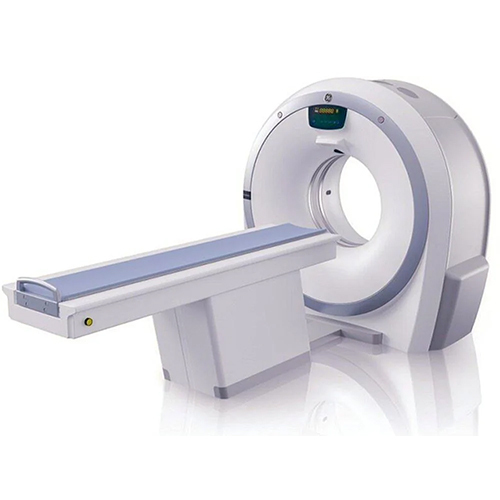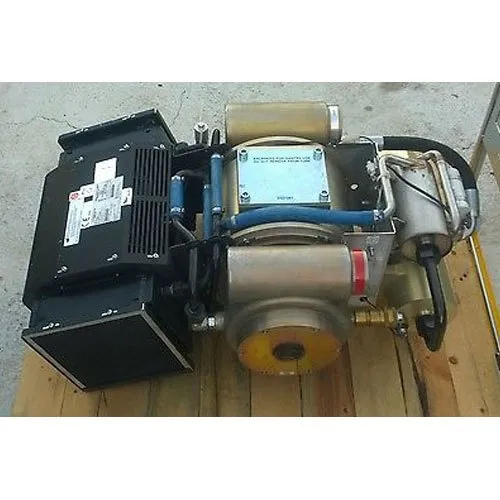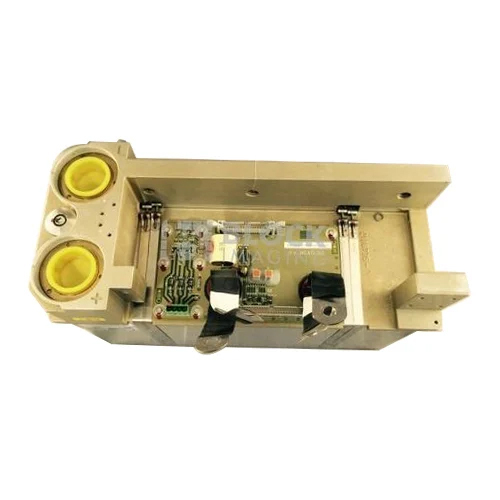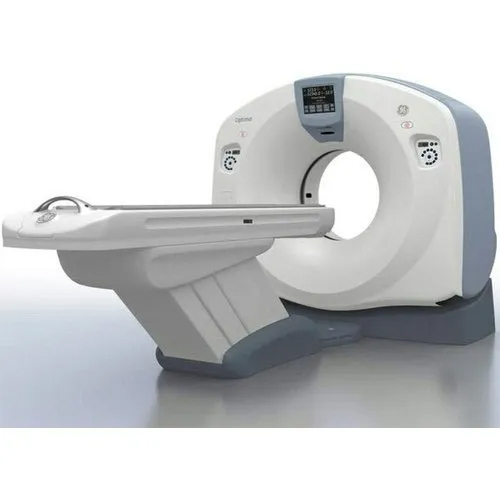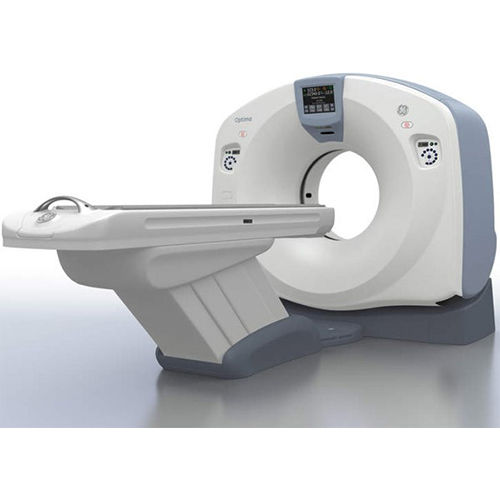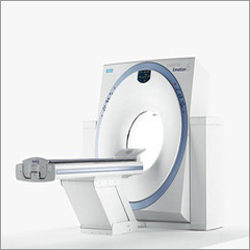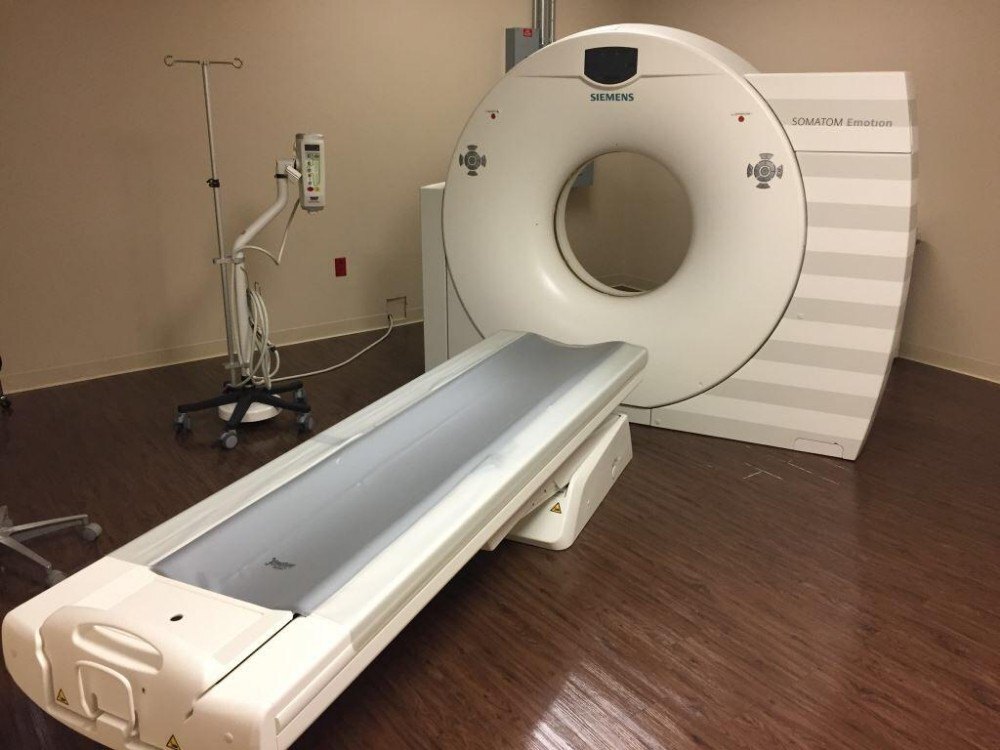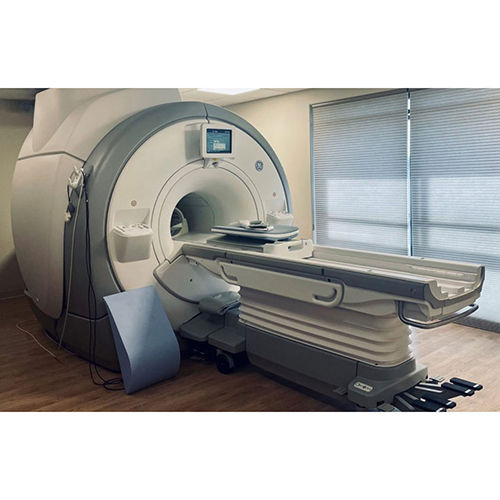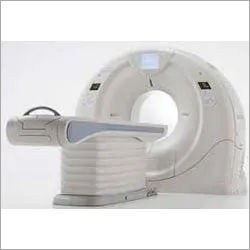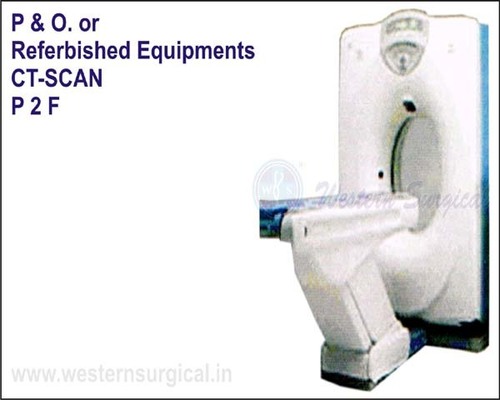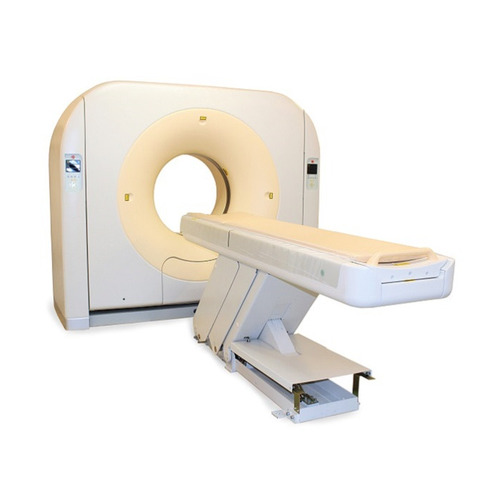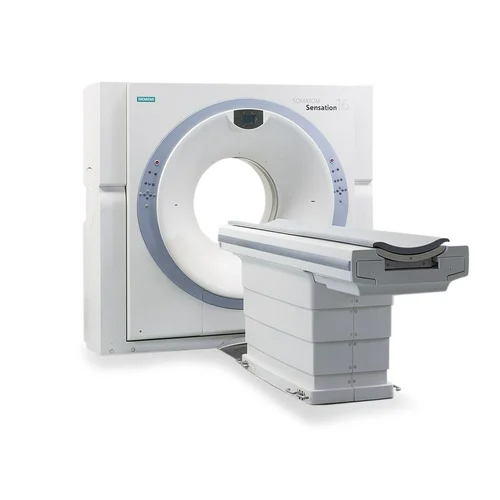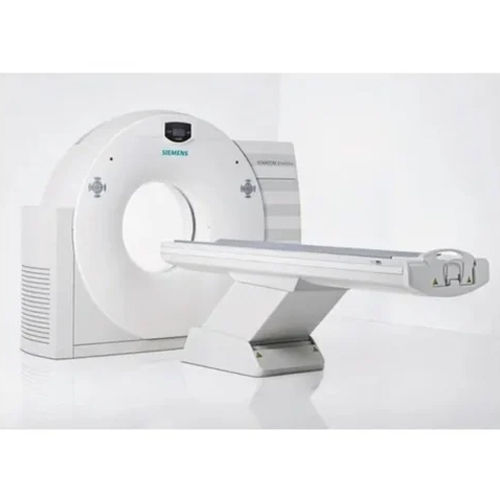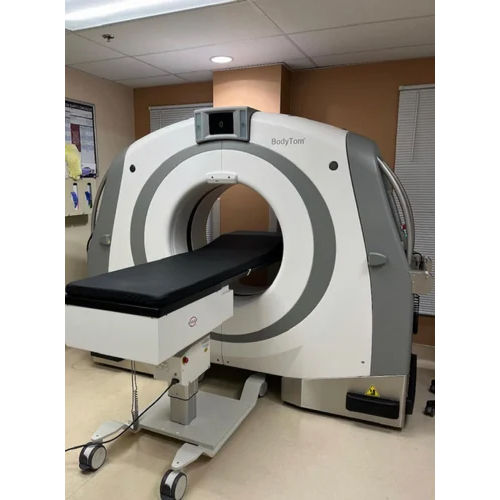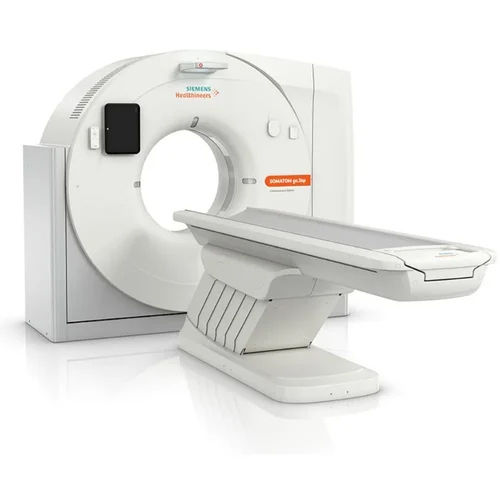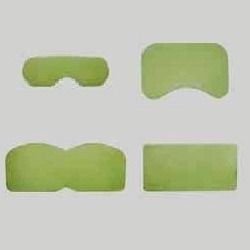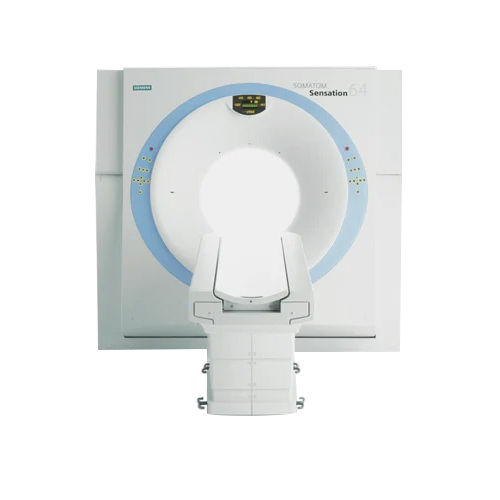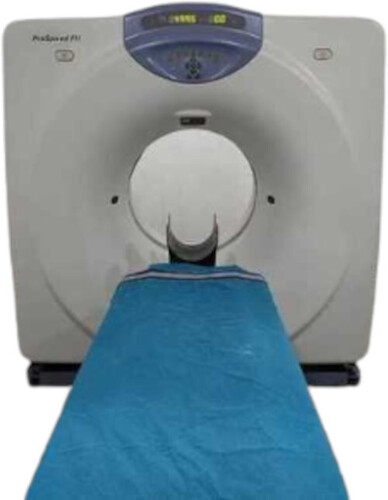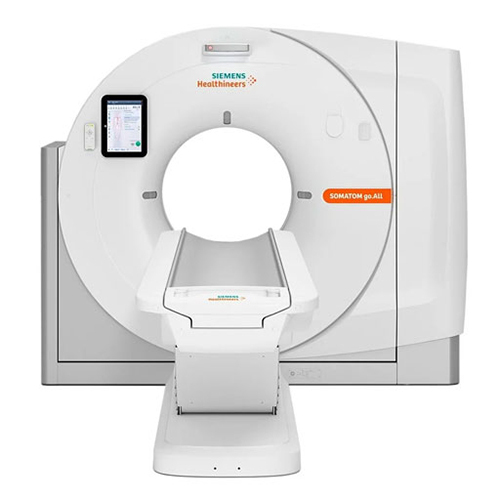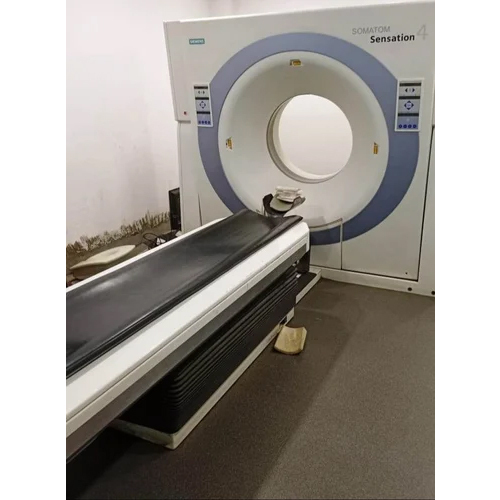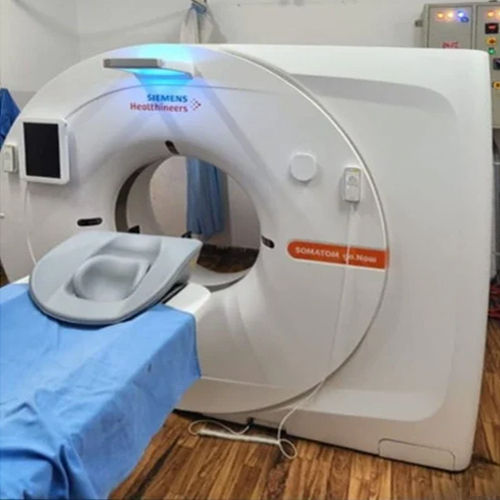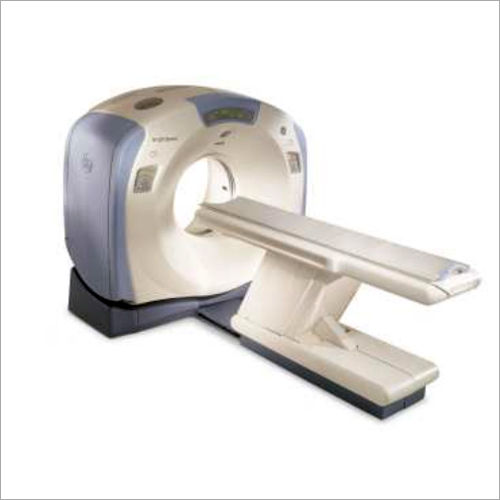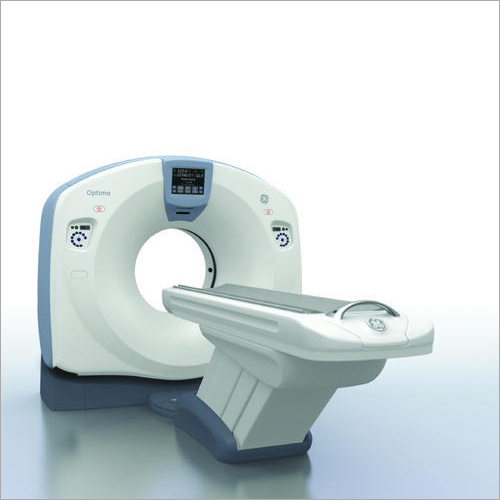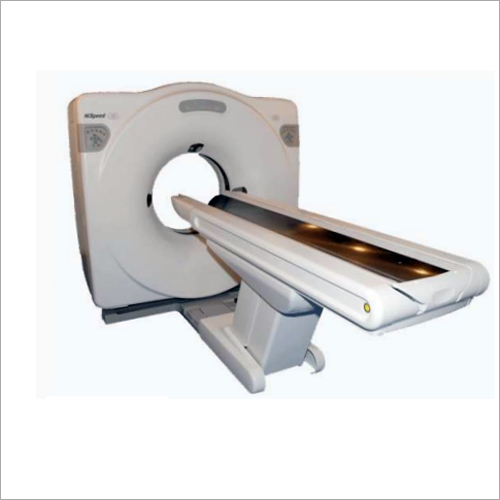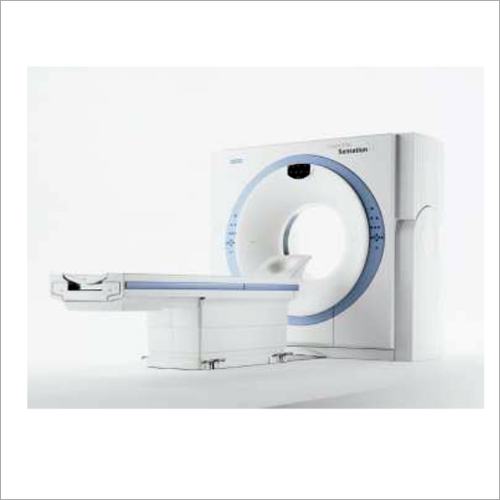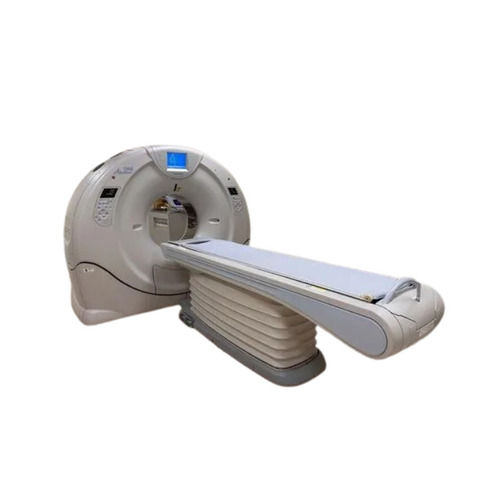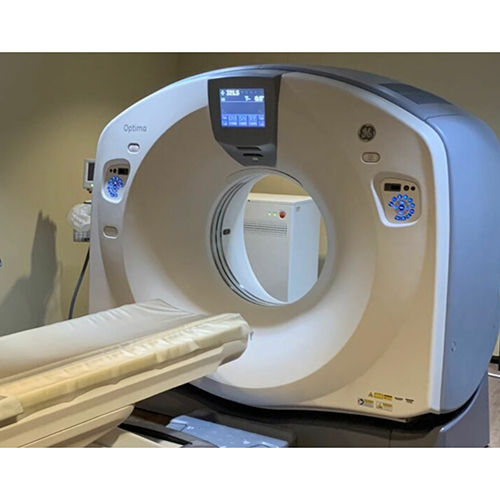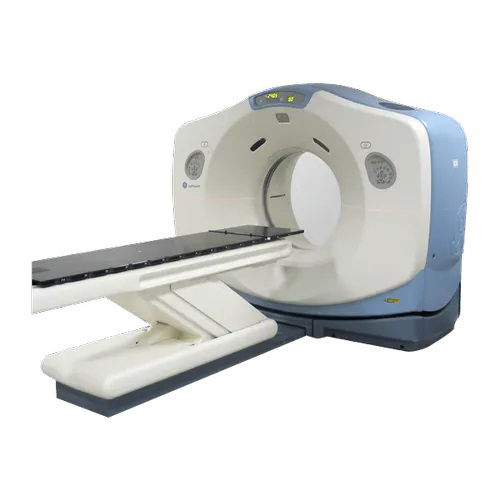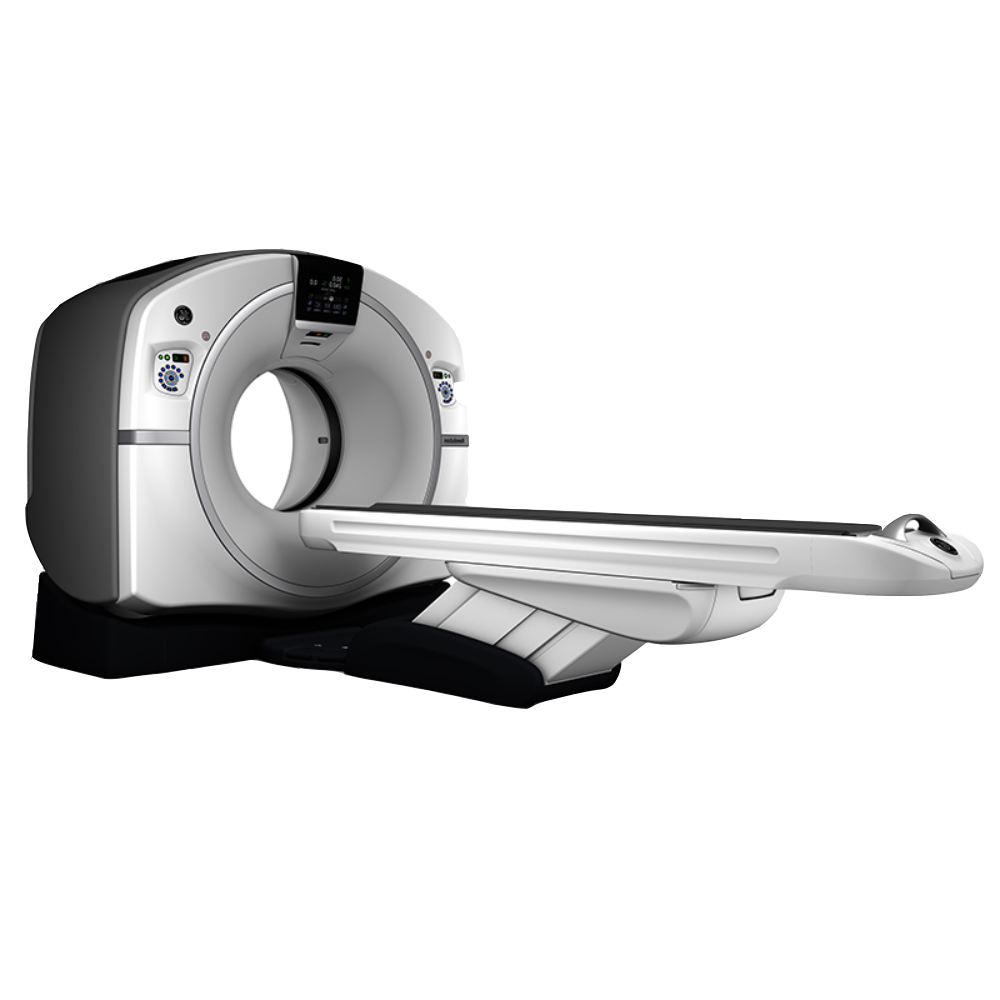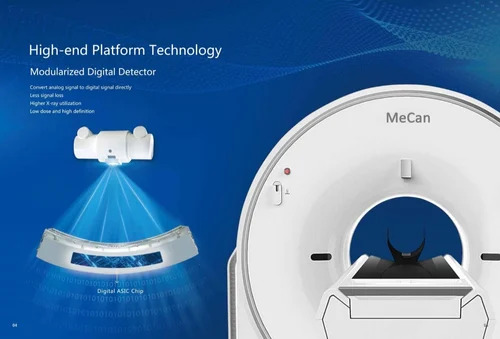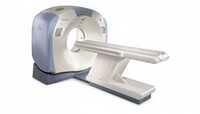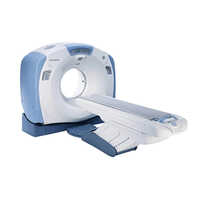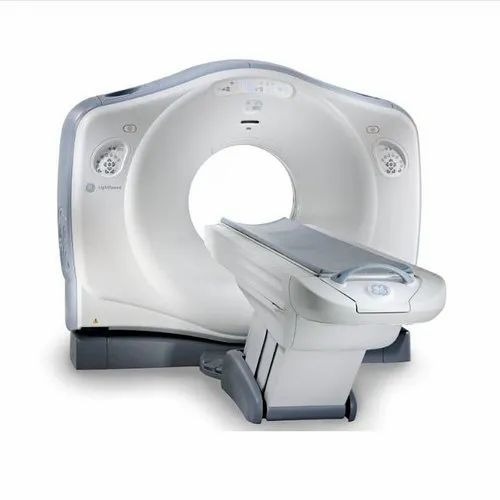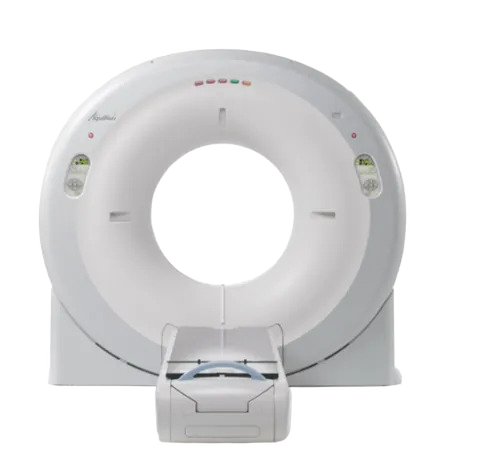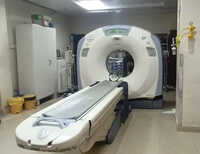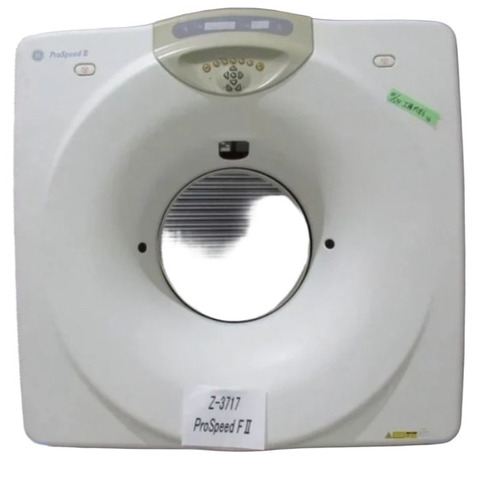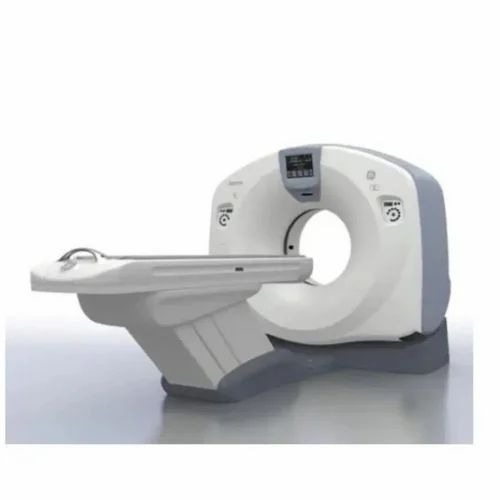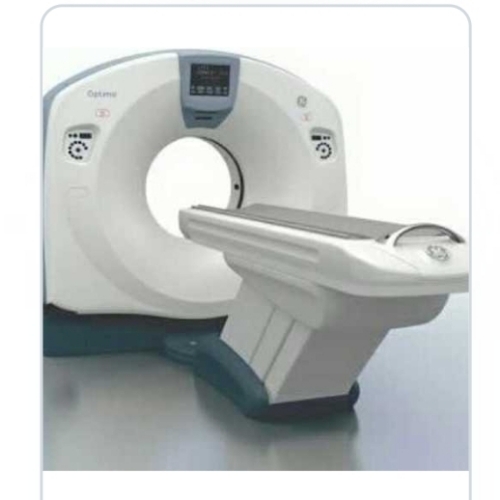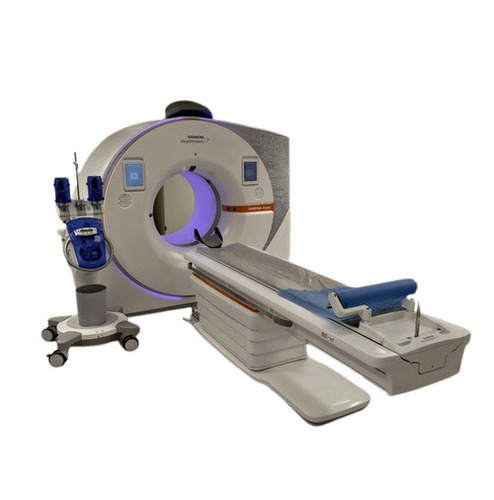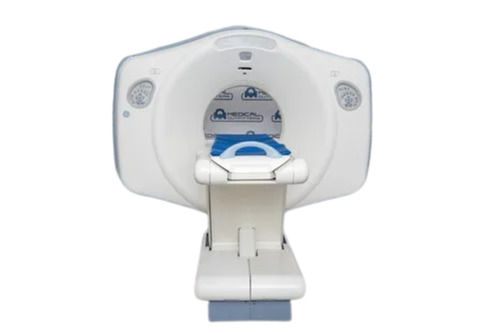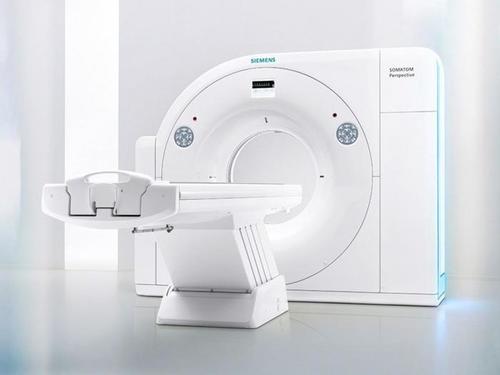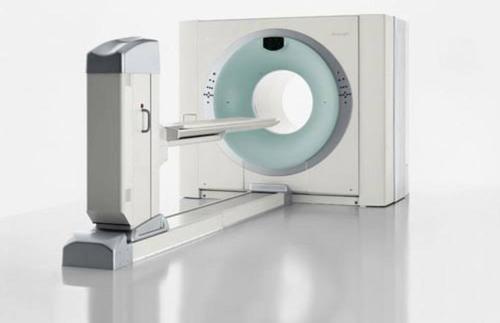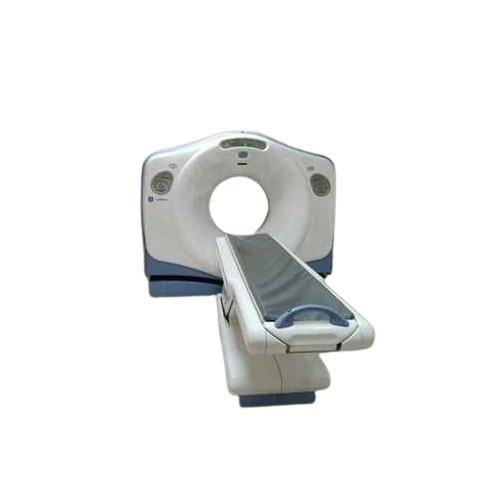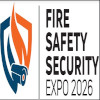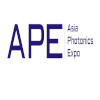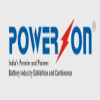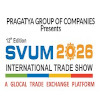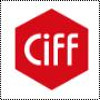- Tradeindia
- Medical Equipment
- Ct Scan Machine
Ct Scan Machine
(319 products)GE Revolution ACT - Polypropylene, 65 cm, White | Automatic Automation, Round Shape, Digital Display, Easy to Use, LED Lighting
8000000 INR/Unit
MOQ1 Unit/Units
FunctionEasy to use
ColorWhite
ConditionNew
ShapeRound
Automation GradeAutomatic
MaterialPolypropylene
View More
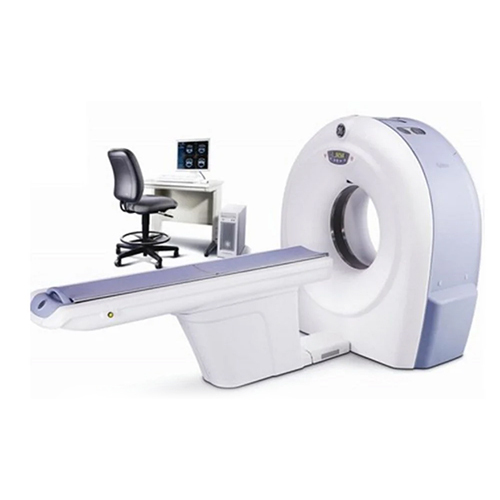
Ge Brivo 325 Dual Slice Ct Scan Machine - Color: White
Price : 8000000 INR
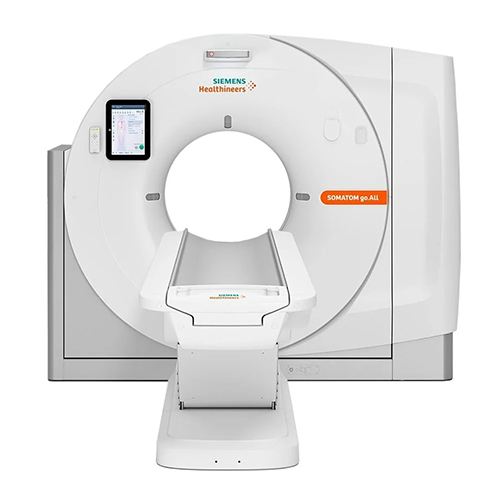
Siemens Somatom Go Now Ct Scan Machine - Automation Grade: Automatic
Price : 8000000 INR
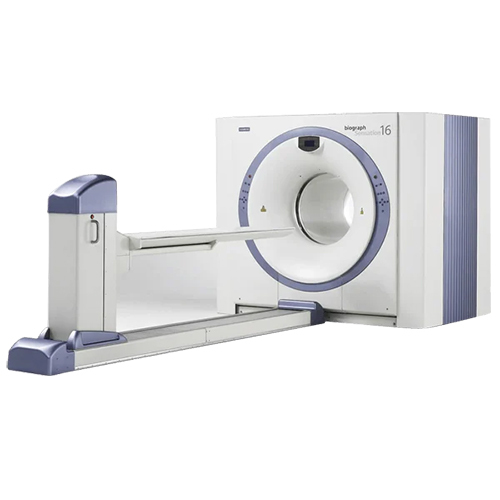
Pet Ct Scan Machine - Automation Grade: Automatic
Price : 8000000 INR
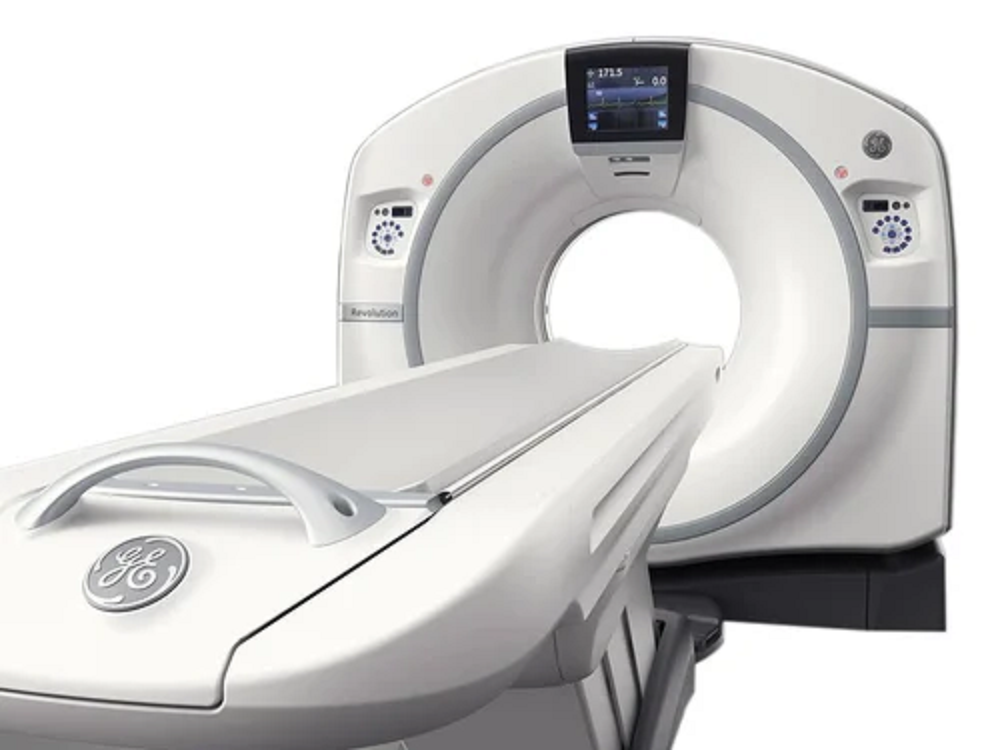
128 Slice Ge Revolution Evo Ct Scan Machine - Automation Grade: Automatic
Price : 80000000 INR
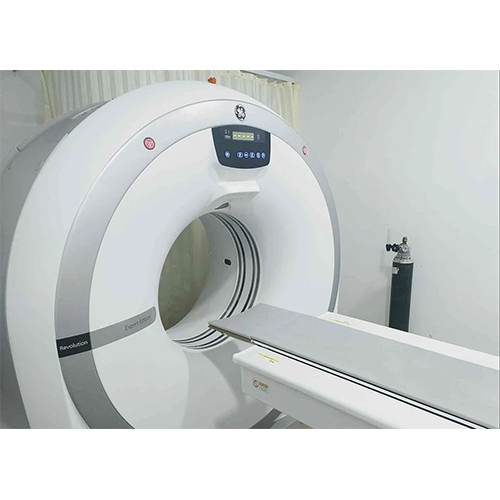
Revolution Act Expert Edition Ct Scan Machine - Color: White
Price : 8000000 INR
CT Scanner Machine - Metal Body , High-Speed Imaging with Advanced 3D Reconstruction and Low-Dose Scanning
MaterialMetal, plastic
Dimensions180x100x200cm
Weight1500kg
Power3000W
Voltage220V
Slice Count64 slices
A.K. Anthem Healthcare Pvt. Ltd.
Noida
 Trusted Seller
Trusted Seller Super Seller
Super Seller Premium Seller
Premium Seller1 Years
Ge Optima 660 Ct Scan Machine - Application: Commercial
Price: 16000000 INR/Unit
MOQ1 Unit/Units
Product TypeCT Scan Machine
Suitable ForMedical Labs / Hospital
UseMedical
MaterialStainless Steel / PVC
PropertiesHigh Quality
ApplicationCommercial
View More
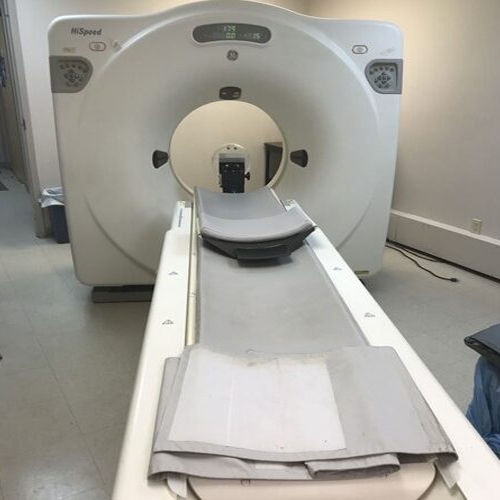
GE Lightspeed Plus 4 Slice CT Scan Machine - Stainless Steel & PVC Materials | Advanced Imaging Technology for Medical Labs & Hospitals, High-Quality Commercial Use
Price : 15000000 INR

Ge Hispeed Dual Ct-E Dual-P Radiscan Speed Fii Ct Scan Machine Application: Commercial
Price : 15000000 INR
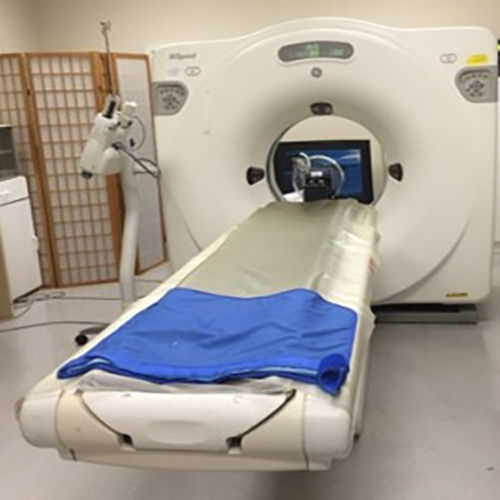
GE Hispeed NXI Base and Pro CT Scan Machine - Stainless Steel and PVC Material | High-Quality Imaging for Medical Labs and Hospitals, Reliable for Routine and Critical Procedures
Price : 15000000 INR
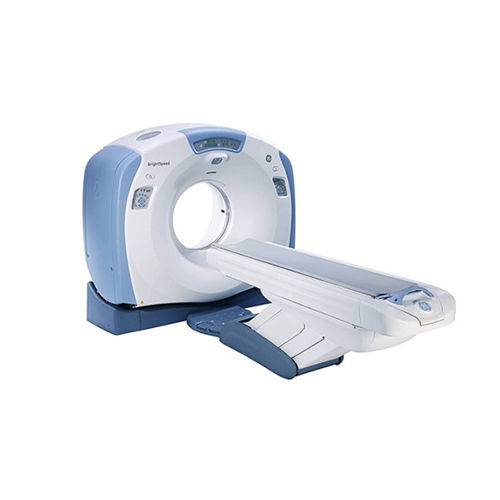
Ge Bright Speed Series Ct Scan Machine Application: Commercial
Price : 15000000 INR
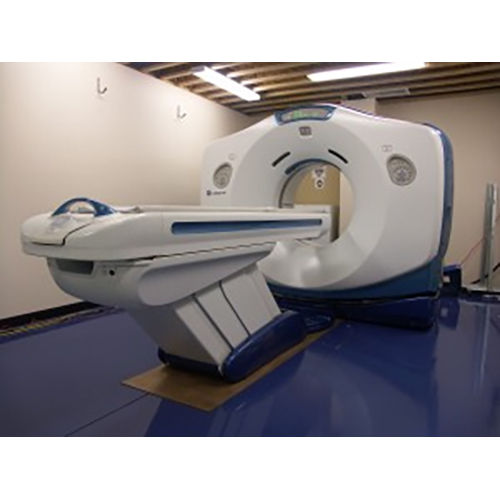
Ge Lightspeed 16 Ct Scan Machine - Application: Commercial
Price : 7200000 INR
Sensation Cardiac Ct Scan Machine - Application: Hospital
Price: 9500000 INR/Unit
MOQ1 Unit/Units
Suitable ForFor Udult & Child
Warranty1 Year
Product TypeSensation Cardiac CT Scan Machine
Frequency50 Hertz (HZ)
ApplicationHospital,Clinic
SizeStandard
Edge Medical Solutions Pvt. Ltd.
Delhi
 Trusted Seller
Trusted Seller Super Seller
Super Seller10 Years
View More
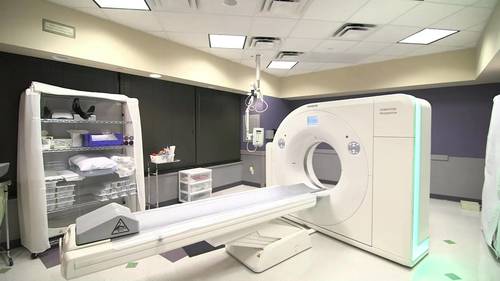
Siemens Emotion Dual Slice Ct Scan Machine - Color Code: White
Price : 4000000 INR
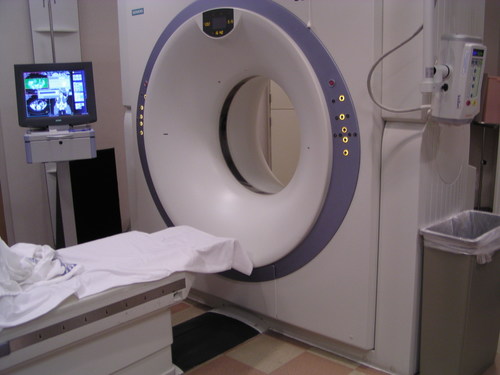
Siemens Sensation 16 Slice Ct Scan Machine - Application: Industrial
Price : 6500000 INR
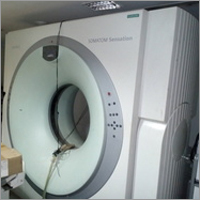
Refurbished CT Scanner - 64 Slice, Siemens | Efficient Performance, Durable Finishing, 0.37s Rotation Time, 1-Year Warranty, Electric Power Source
Price : 7500000 INR
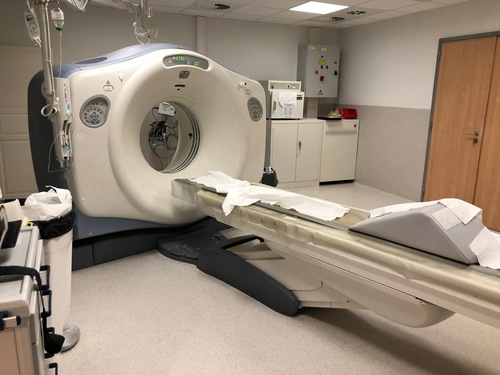
Siemens Emotion 16 Slice Ct Scan Machines - Color Code: White
Price : 7500000 INR

Cardiac Ct Scan Machine - Color Code: White
Price : 9500000 INR
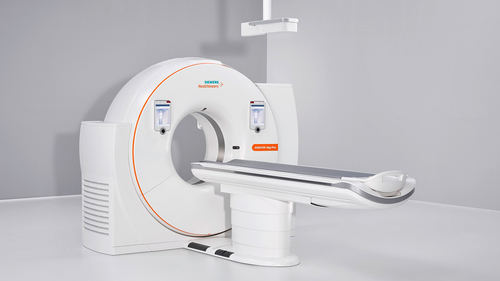
Siemens Spirit Dual Slice Ct Scan Machines - Color Code: White
Price : 4000000 INR
Siemens Emotion 16 Slice Ct Scanner - Automation Grade: Automatic
Price: 8000000 INR/Unit
MOQ1 Unit/Units
Warranty1 Year
ConditionNew
FunctionEasy to use
Storage InstructionsDry Place
UseHospital
MaterialPolypropylene
Mevian Technology Private Limited
Secunderabad
 Trusted Seller
Trusted Seller Premium Seller
Premium Seller1 Years
View More

Ge Brivo 325 Dual Slice Ct Scan Machine - Color: White
Price : 8000000 INR

Siemens Somatom Go Now Ct Scan Machine - Automation Grade: Automatic
Price : 8000000 INR

Revolution Act Expert Edition Ct Scan Machine - Color: White
Price : 8000000 INR

Pet Ct Scan Machine - Automation Grade: Automatic
Price : 8000000 INR

128 Slice Ge Revolution Evo Ct Scan Machine - Automation Grade: Automatic
Price : 80000000 INR
CT Scan Services - High-Resolution Imaging Solutions | Precision Diagnosis, Expert Radiology, Non-Invasive Procedures
Product DescriptionCT Scan Services
Ct Scanner - Application: Medical
Price: 3000000 INR/Unit
MOQ1 Piece/Pieces, Piece/Pieces, Piece/Pieces
ApplicationMedical
Suitable ForHospital OT
Treatment TypeDiagnostic Imaging
Height1400 mm Meter (m)
Frequency50/60 Hz Hertz (HZ)
Color CodeWhite/Grey
High-Resolution CT Scanner with 512x512 Resolution and 0.5 mm Slice
Product image urlhttps://cpimg.tistatic.com/5685100/s/1/CT-Scan.jpg
Product nameHigh-Resolution CT Scanner
Resolution512x512
Slice thickness0.5 mm
Scan time10 sec
Power supply220V AC
Siemens Somatom Go Now Ct Scan Machine - Application: Medical
Price: 600000 INR/Unit
MOQ1 Unit/Units
Materialmetal, plastic composites
Display Typemonitor
ColorWhite
UseCT Scan Machine
PropertiesPortable
Suitable For UseMedical Use
Divice Medical Systems Pvt Ltd
Secunderabad
 Trusted Seller
Trusted Seller Premium Seller
Premium Seller1 Years
View More
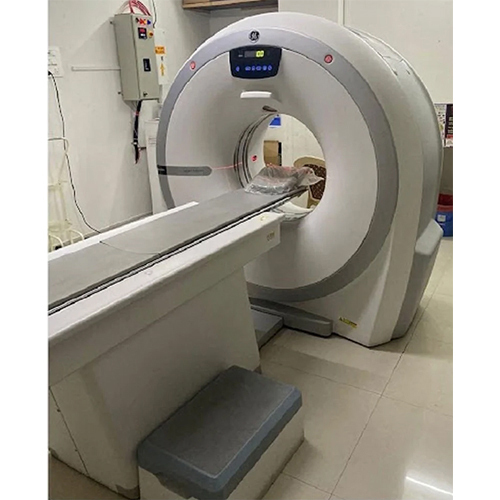
Ge Revolution Act 16 Slice Ct Scan Machine - Power: 150 Volt (V)
Price : 8500000 INR

Revolution Act Expert Edition Ct Scan Machine - Power Source: 250
Price : 800000 INR
MX-16 Refurbished CT Scan Machine - Digital Display, Panoramic Array Operation, Integrated Whole-body Design | Hospital and Clinic Use, Durable Plastic and Metal Material, Versatile Voltage Options 110V-440V
Voltage110V, 220V, 380V, 440V
ModelMX-16
DisplayDigital
OperationPanoramic array
ConditionRefurbished
TypeWhole-body
View More
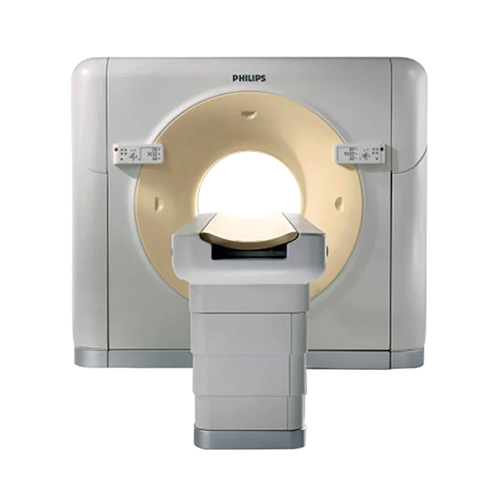
Philips Brilliance 16 Slice Ct Scan Machine - Application: Medical Imaging
Price : 7500000 INR
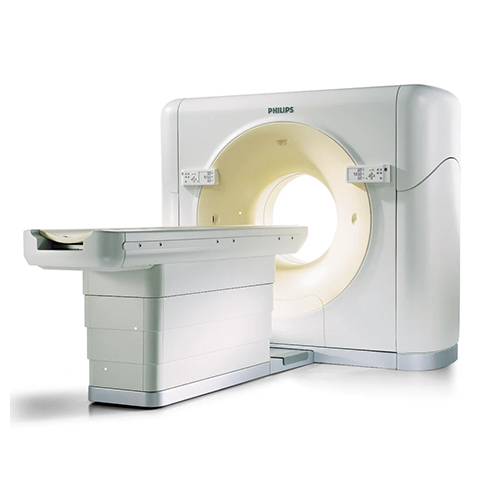
Philips Brilliance 64 Ct Scan Machine - Application: Medical Imaging
Price : 12500000 INR

Siemens Somatom Go Now Ct Scan Machine - Application: Medical Imaging
Price : 15000000 INR
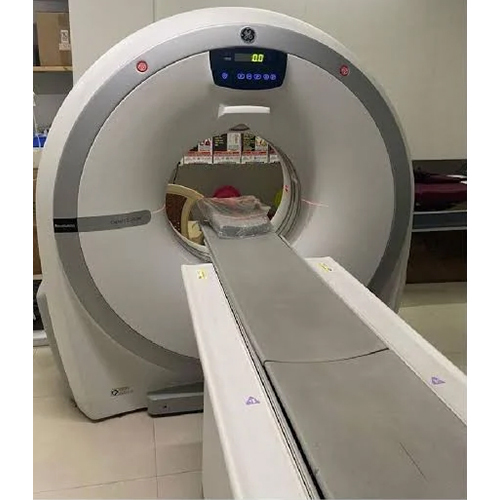
Ge Revolution Ct Scan Machine - Application: Medical Imaging
Price : 8000000 INR
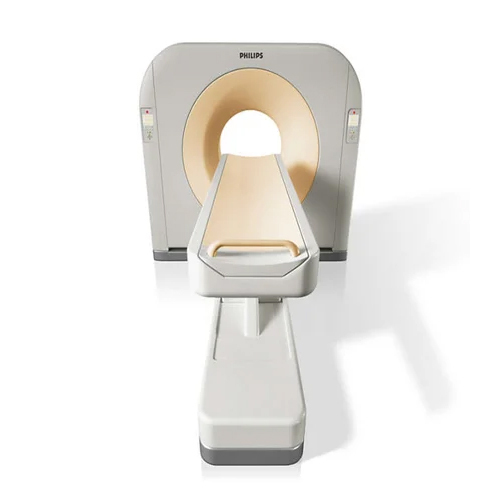
Refurbished Ct Scan Machine - Application: Cancer Screening
Price : 4000000 INR

Refurbished Ct Scan Machine - Application: Medical Imaging
Price : 4000000 INR
Siemens Somatom 64 Slice Ct Scan Machine - Power: 80 Watt (W)
Price: 3000000 INR/Unit
MOQ1 Unit/Units
Power80 Watt (w)
PropertiesHigh Quality
ApplicationCT Scan, MRI Scan
Suitable ForMedical Labs / Hospital
Product TypeCT Scan Machine
UseMedical
Professional Healthcare Services
Hyderabad
 Trusted Seller
Trusted Seller Premium Seller
Premium Seller2 Years
View More
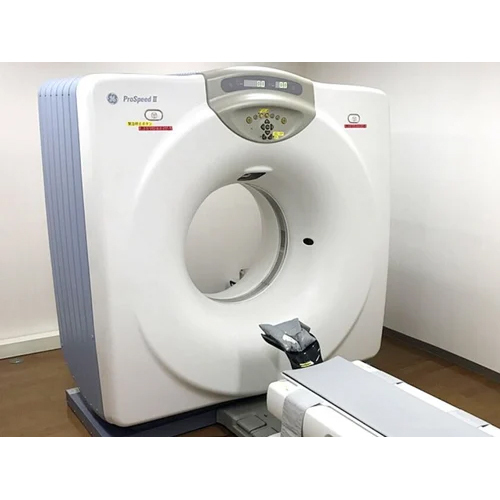
Ge Pro Speed Cte Dual Slice Ct Scan Machine - Power: 45 Watt (W)
Price : 3000000 INR
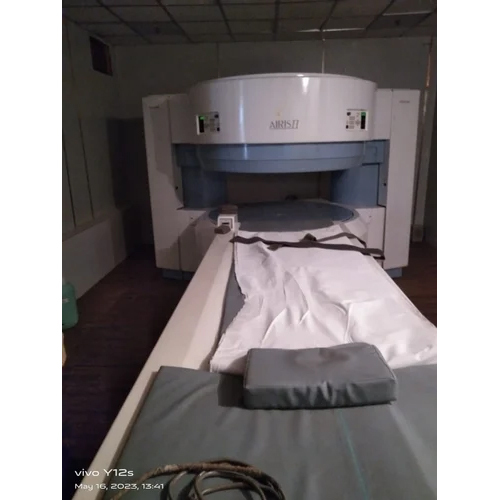
Hitachi Aires 3 Tesla Open Mri Machine - Application: Ct Scan
Price : 26000000 INR
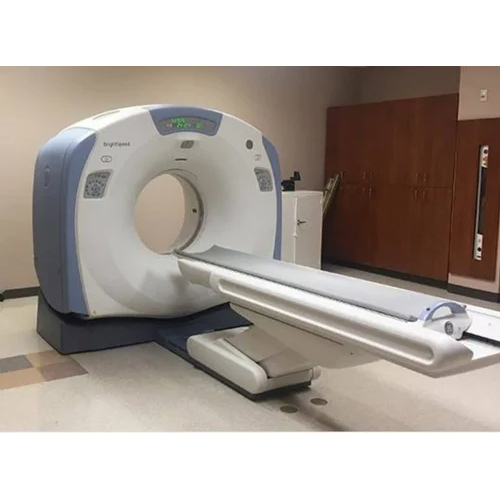
Ge High Speed Ct Scan Machine - Power: 42 Watt (W)
Price : 2400000 INR
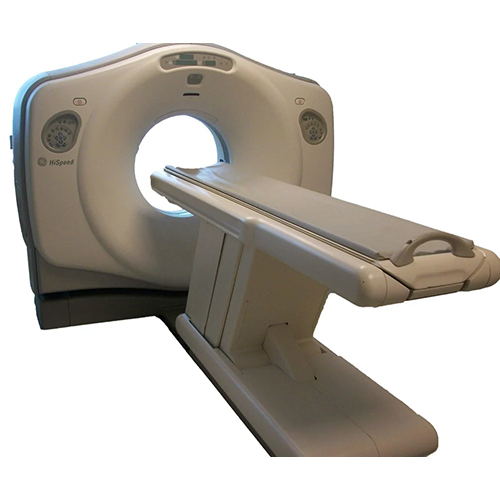
Ge Healthcare Lightspeed Plus 4 Slice Ct Scan Machine - Power: 53 Watt (W)
Price : 6500000 INR
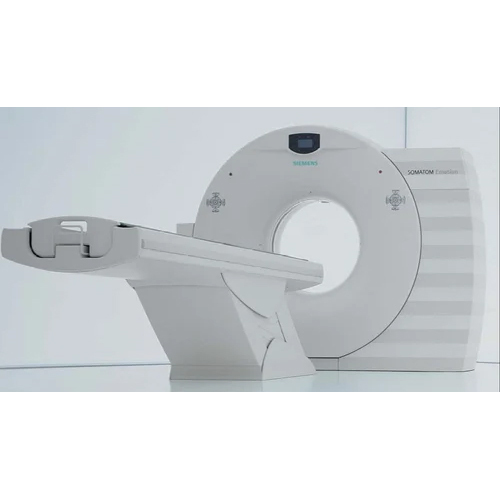
Diagnostic Siemens Emotion 16 Slice Ct Scan Machine - Power: 50 Watt (W)
Price : 5000000 INR
Refurbished Ct Scanner - Automation Grade: Automatic
Price: 150000 INR/Unit
MOQ1 Unit/Units
Automation GradeAutomatic
UseHospital
ConditionNew
Voltage320 Volt (v)
DisplayDigital
Pathimage Instruments Co.
Kolkata
 Trusted Seller
Trusted Seller Premium Seller
Premium Seller1 Years
View More
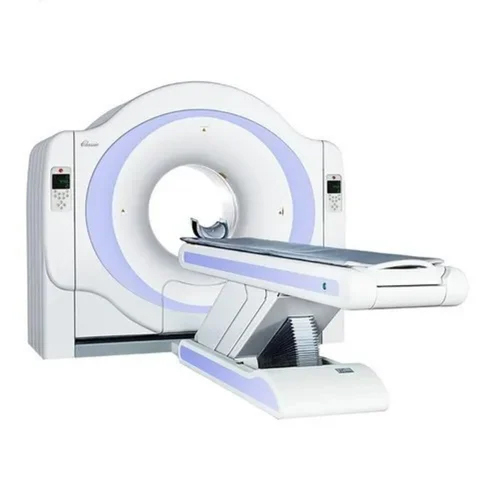
Ge Refurbished Ct Scan Machine - Application: Hospital
Price : 5500000 INR
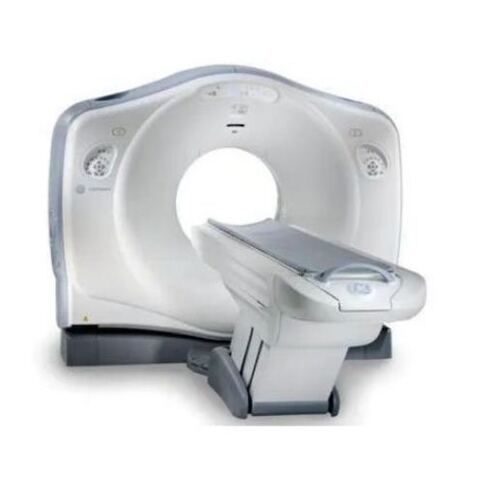
Ct Scan Machine For Medical Applications Use
Get Best Deal

Refurbished Ct Scan Machine - Application: Hospital
Price : 5500000 INR
Siemens 16 Slice Ct Scan Machine - Application: Hospital
Price: 7500000 INR/Unit
MOQ1 Unit/Units
Color CodeWhite
ApplicationHospital
Product TypeCT Scan Machine
MaterialStainless Steel and Plastic
Suitable ForHospital
UseHospital
View More
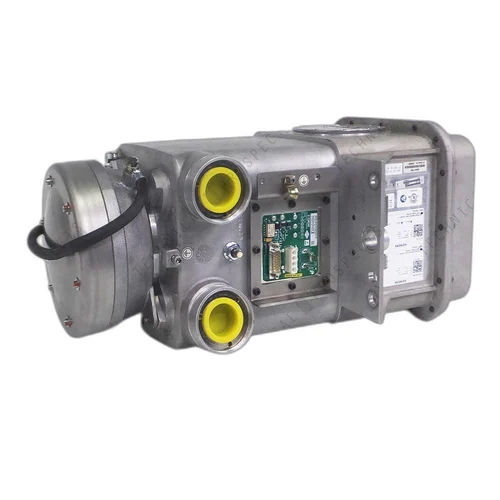
140kv CT Scan Machine Tube - Stainless Steel & Plastic, 3.3 (MHU) Breaking Capacity, Reliable Hospital Imaging Solutions
Price : 2800000 INR

16 Slice Somatom Emotion CT Scan Machine - Stainless Steel, White Color Code | High Efficiency, 6.3 MHU Tube Capacity for Quick Diagnoses
Price : 3800000 INR
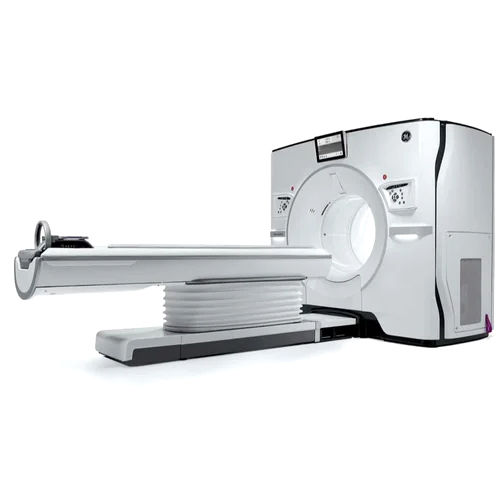
Single Slice Ct Scan Machine - Application: Hospital
Price : 2800000 INR
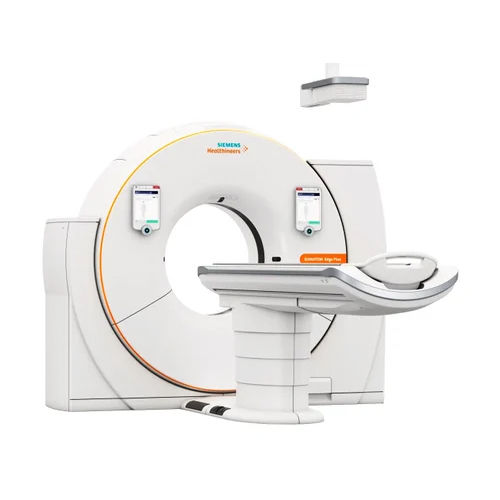
Siemens Dual Slice Ct Scan Machine Color Code: White
Price : 3800000 INR
Top Rated Products
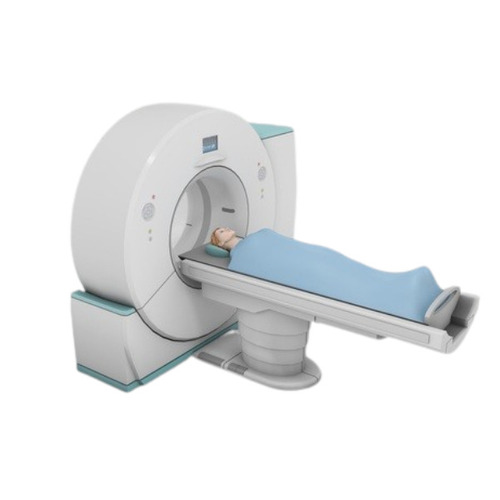
CT Scanner Machine - Metal Body , High-Speed Imaging with Advanced 3D Reconstruction and Low-Dose Scanning
A.k. Anthem Healthcare Pvt. Ltd.
FAQs Related to Ct Scan Machine
The CT scan will be done by a radiologist tech. You will recline on a table within a big, doughnut-shaped CT machine while the test is being performed.
Here are two common risks:
Allergic reactions: A few persons may experience a mild or severe allergic reaction to the contrast agent.
Cancer risk: The use of radiation for imaging purposes, including X-rays, raises the risk of cancer. The gap is too narrow for accurate comparison.
The cost of a CT scan machine is between Rs 1 lakhs to 90 lakhs in India.
Yes, you can start by investing Rs 80,00,000. You will need:
License
Registration
Software Tools
Hiring Staff
Equipments
Qualification
Set up
Infrastructure
Hospital Ct Scan Machine - Color Code: White
Price: 3200000 INR/Unit
MOQ1 Unit/Units
MaterialSteel
Product TypeHospital CT Scan Machine
ApplicationHospital
Color CodeWhite
Suitable ForHospital
UseHospital
Vvm Biotech Infra Pvt Ltd
Ambernath
 Trusted Seller
Trusted Seller Premium Seller
Premium Seller3 Years
Material Universal Patient CT Shield for Radiology Protection with ISO
MaterialLead
Thickness0.5 mm
Weight3 kg
ApplicationRadiology
UsagePatient Protection
SizeUniversal
Rege Imaging & Cine Films (p) Ltd.
New Delhi
 Trusted Seller
Trusted Seller Premium Seller
Premium Seller15 Years
Detector Hitachi Superia CT Scan Machine for Commercial Use
Detector64 channels
Slice thickness0.5 mm
Gantry aperture70 cm
Patient weight capacity200 kg
Scan typeMulti-slice
MaterialStainless Steel/PVC
View More
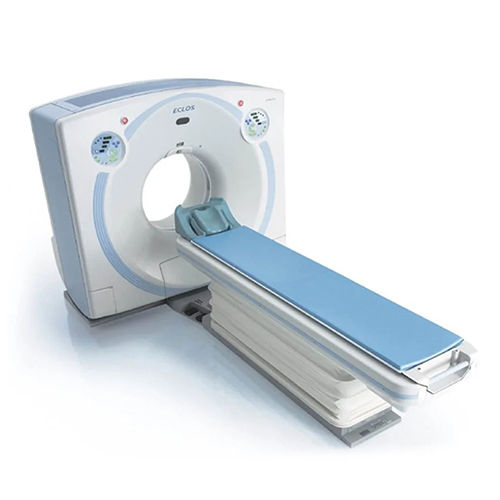
Hitachi Eclos Multislice Ct Scan Machine Application: Commercial
Price : 7500000.00 INR
Microfocus X-Ray Ct System - Capacity: 500 M3/Hr
Price: 2500000 INR/Unit
MOQ1 Unit/Units
MaterialSteel
Weight2950kg Kilograms (kg)
Product TypeCT System
Power SupplyElectric
ColorWhite
UsageMeasuring Tools
Radiance Healthcare Inc
Ranga Reddy district
 Trusted Seller
Trusted Seller Premium Seller
Premium Seller3 Years
Refurbished CT Scan Machine - Medical-Grade Steel and Composite Materials, White Color, Advanced Imaging Technology for High-Quality Patient Care and Diagnosis
ApplicationComputed Tomography
TypeMedical
BrandGE
ConditionRefurbished
Warranty1 Year
Power8 kW
View More
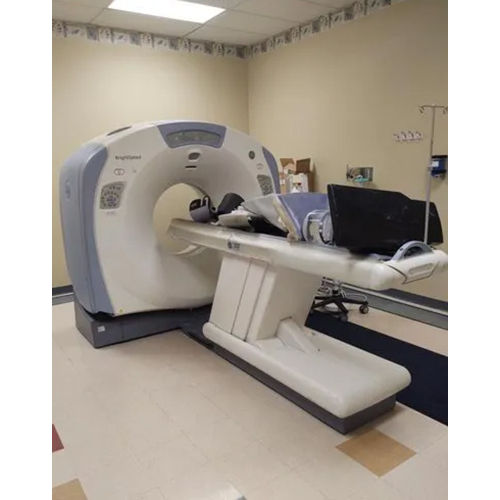
Refurbished Imported Ge Ct Scan Machine Color Code: White
Price : 7000000 INR
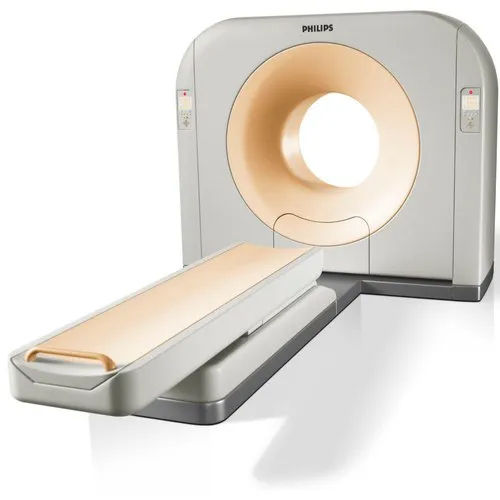
Refurbished Philips Ct Scan Machine - Color Code: White
Price : 710000 INR
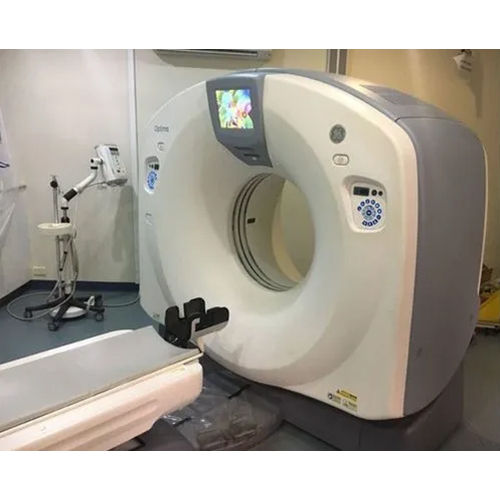
Refubished Optima 660 Ge Ct Scan Machine Color Code: White
Price : 9000000 INR
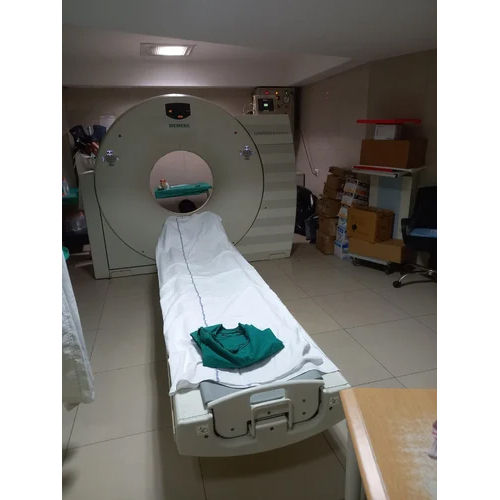
Siemens Ct Scan Machine Application: Diagnostics
Price : 6500000 INR
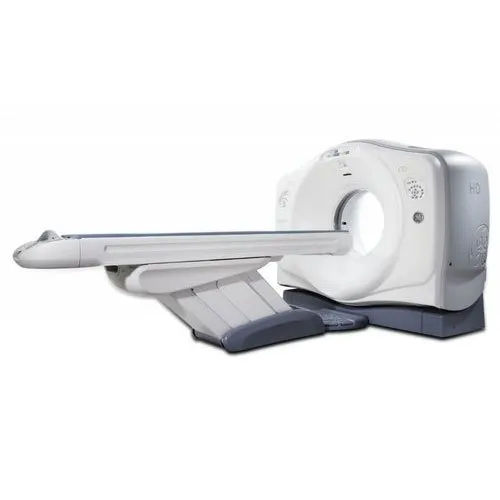
Refurbished Ge Ct Scan Machine Color Code: White
Price : 6500000 INR
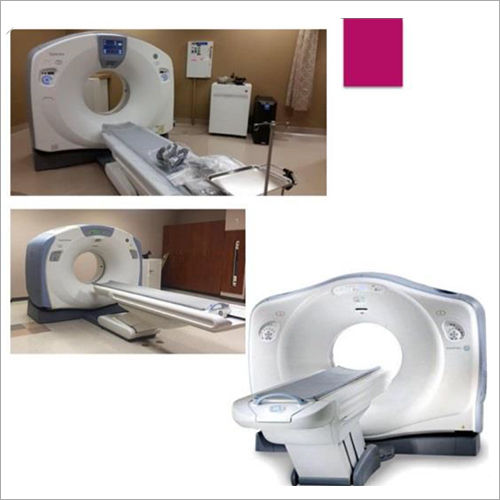
Refurbished Ge Ct Scan Machine Application: Hospital
Price : 8400000 INR
Quality CT3500 Helical CT Scanner for Hospital with 64 Detector Rows
ApplicationHospital
Scanner typeHelical
Detector rows64
Slice thickness0.5 mm
Gantry aperture70 cm
Power supply220 V
Somatom Go Now 16-32 Slice CT Scanner for Diagnostic Imaging in
ApplicationDiagnostic Imaging
Slices16/32
DetectorStellar
Table load200 kg
Rotation time0.33 sec
Kv options70-140 kV
Rx Medical Systems And Services
Jaipur
 Trusted Seller
Trusted Seller Premium Seller
Premium Seller2 Years
Refurbished Ct Scan Machine - Automation Grade: Automatic
Price: 3000000 INR/Unit
MOQ1 Unit/Units
FunctionEasy to use
Size16 slice
ConditionNew
MaterialPVC
Automation GradeAutomatic
UseHospital
View More
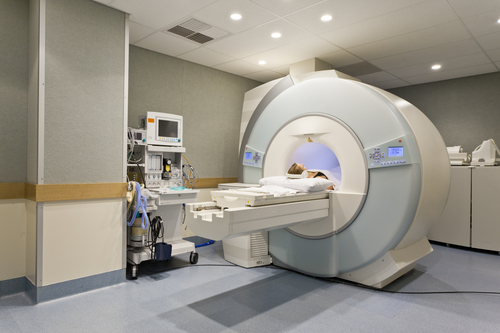
Refurbished Ct Scan Machines - Camera Specifications: Yes
Price : 4000000 INR
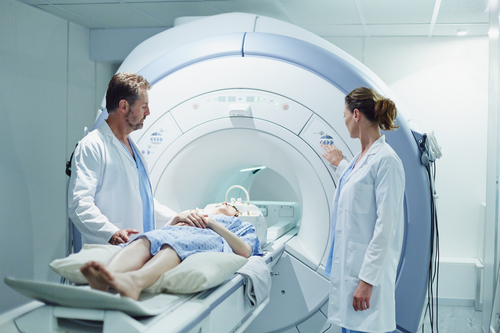
Ct Scan Machines - Application: Commercial
Price : 7500000 INR
Used Ct Scan Machine - Application: Commercial
ApplicationCommercial use in Medical industry
MaterialPVC
Detector typeMulti-slice
Slice count64
Gantry aperture70 cm
Max voltage120 kV
View More

Refurbished Ct Scan Machine - Material: Pvc
Price : 8500000 INR
Bright Speed Ct Scanner - Light Source: Yes
Price: 7500000 INR/Piece
MOQ1 Piece/Pieces
MaterialStainless Steel
ConditionOld
TechnologyX-Ray
PortableNo
Light SourceYes
Display TypeLCD Display
Radimage Technologies Pvt. Ltd.
Faridabad
 Trusted Seller
Trusted Seller Premium Seller
Premium Seller8 Years
View More
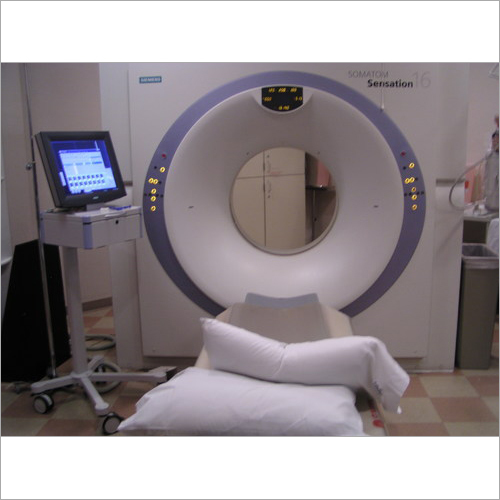
Siemens CT Scanner - High Precision Imaging System, Advanced 3D Reconstruction Technology, Real-Time Diagnostics
Price Trend : 27.00 - 29.00 INR
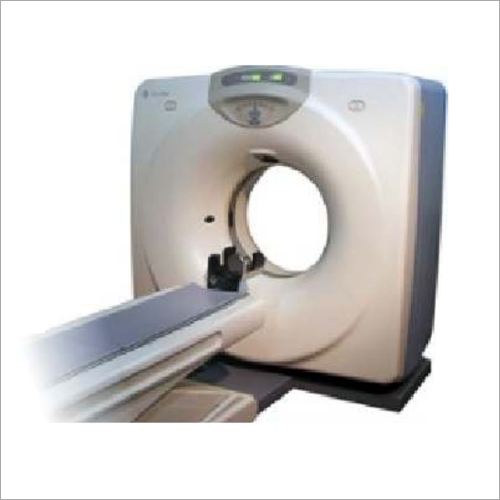
GE Hispeed FXi CT SCANNER
Get Best Deal
Advanced Corrosion Resistant CT Scan Machine with Digital Display
Power SourceElectric
ConditionNew
Corrosion ResistantYes
DisplayDigital
Country of OriginMade in India
FeaturesHigh resolution, Fast scanning, Digital display, Corrosion resistant, Easy operation, Precise imaging, Patient comfort
Ge Optima 660 128 Ct Scan Machine Color Code: White-Light Blue
Price: 19000000 INR/Piece
MOQ1 Piece/Pieces
Color CodeWhite-Light Blue
Product TypeGe Dual slice Brivo CT Scan Machine
UseHospital
MaterialFRP
S.B.M. Healthcare (india) Pvt. Ltd.
New Delhi
 Trusted Seller
Trusted Seller Premium Seller
Premium Seller3 Years
View More
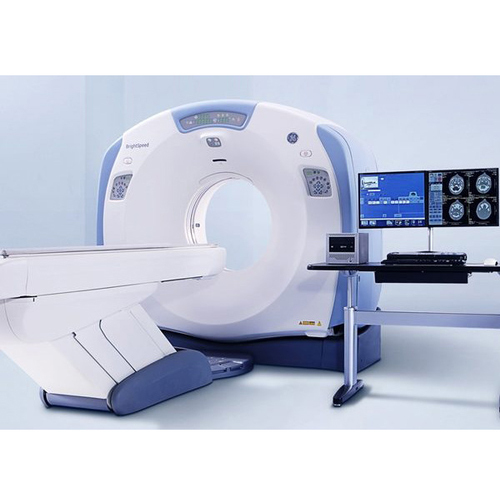
Ge Bright Speed Ct Scan Machine Color Code: White-Light Blue
Price : 7500000 INR
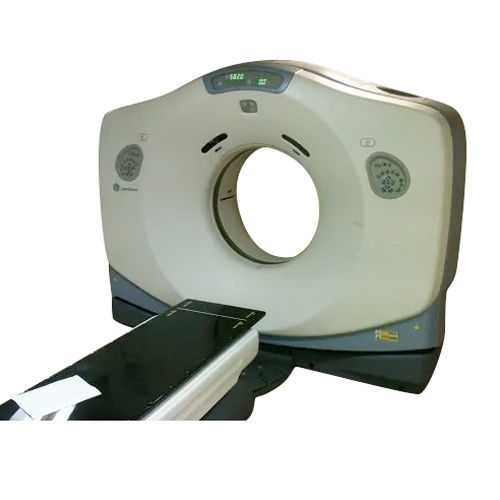
Refurbished Dual Slice Ct Scan Machine Color Code: White-Grey
Price : 4000000 INR
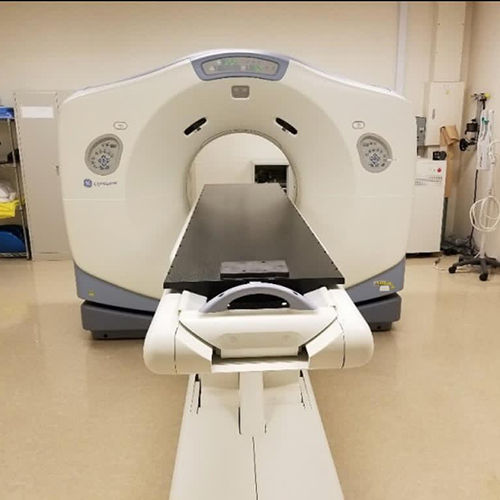
Ge Light Speed 4 Slice Ct Scan Machine Color Code: White-Grey
Price : 7000000 INR
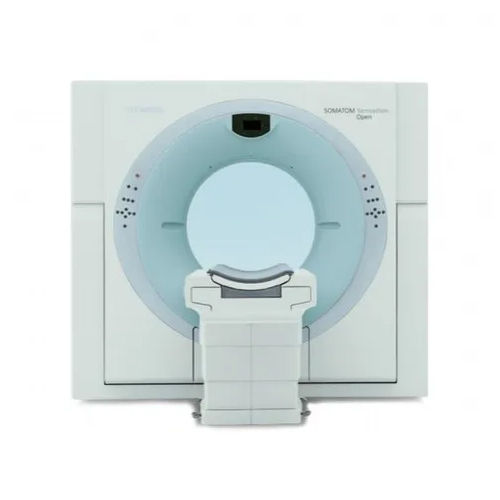
White High Definition Refurbished Siemens SOMATOM 40 Slice CT Scan Machine
Price : 8500000 INR
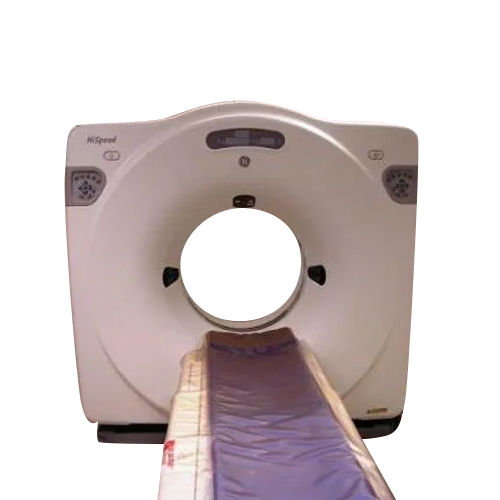
Hospital Refurbished Ge Dual Slice Ct Scan Machine Color Code: White
Price : 4000000 INR
Refurbished GE Revlution EVO CT Scanner
Price: 20000000.0 INR/Number, Number, Number, Number
MOQ1 Number, Number, Number, Number
MaterialPlastic
ShapeRectangular
Suitable For UseHospital Use
FeatureLong Lasting use
ApplicationHospital and Clinical Use
ConditionRefurbished
View More
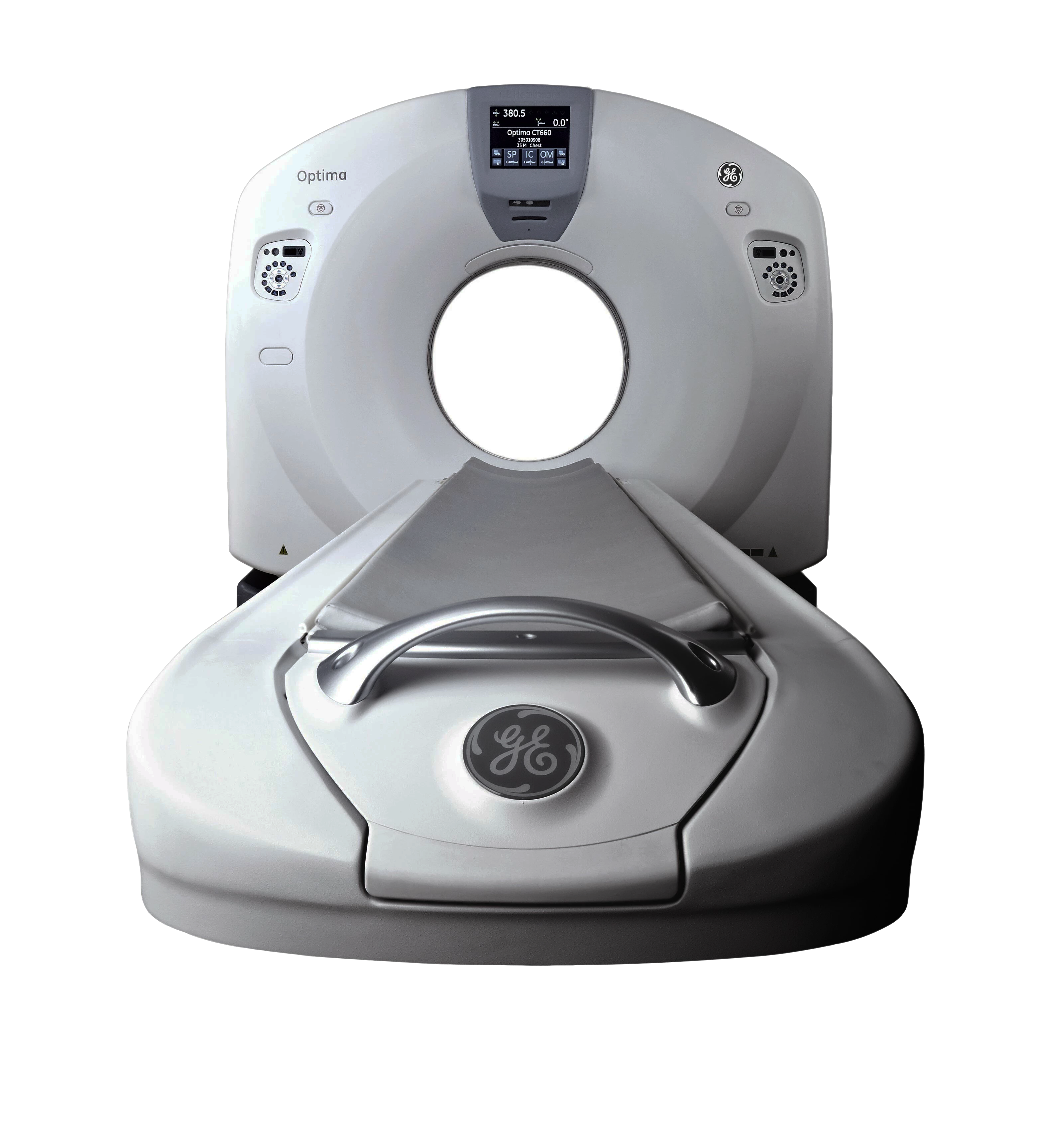
Refurbished GE Optima 660 CT Scan Machine
Price : 28000000 INR
Table Advanced Multi-Slice CT Scan Machine for Hospital and Clinical Use
Slice Thickness0.3125mm
Detector Rows32
Gantry Aperture75cm
Matrix1024
KVp70
Slices64
View More
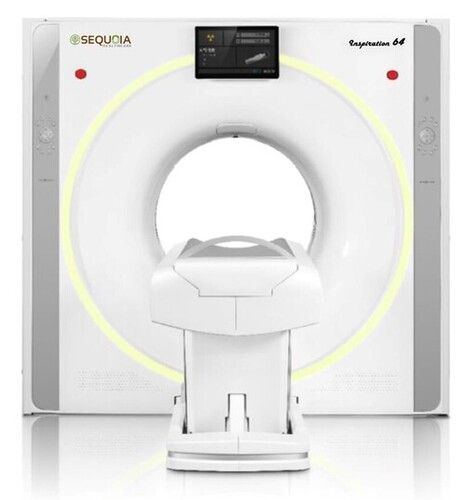
Ct Scan Machine Application: Commercial
Price : 13000000.0 INR
Ct Scan Machine - Color: White
MOQ1 Piece/Pieces
ConditionNew
SizeStandard
Voltage220 Volt (v)
ColorWhite
MaterialPlastic
FeatureGood Quality
Somatom Go All CT Scanner Advanced Imaging Solution for Hospitals
Detector typeSolid-state
Gantry aperture78 cm
Rotation time0.33 sec
Slice thickness0.5 mm
Scanning modesHelical/Spiral
Max power80 kW
Masters Medical Solutions Private Limited
Nagpur
 Trusted Seller
Trusted Seller2 Years
Latest from Ct Scan Machine
GE make Brightspeed CT Scan Machine
By:
Ansh Healthcare Services
CT Scan Machine
By:
U S A Medical Systems
Popular Ct Scan Machine
Client Testimonials & Reviews

NazimMunshi
MN LIFE CARE PRODUCTS PVT. LTD.
Daily visit in Tradeindia is like visiting any social site to me. I am associated with Tradeindia.com from past 4 years and in this 4 years this co gave me no reason to invest on other B2B portal. In one word it is the actual "SATISFACTION" or "SUCCESS" which i met through them (tradeindia). I am sure people who have invested and will invest here for their business promotions and growth are the successful persons and their decision to invest here is best business idea/venture ever.

AndyChou
ZS ENTERPRISE CO., LTD.
My company ZS ENTERPRISE CO LTD has joined tradeindia for 6 years back. We are happy with the service, promotion and response. It has help us to develop good business in international market, we get good inquiries using the platform and the support we get from the account manager is appreciated. Thanks for that, and we expect more good business in the upcoming years.
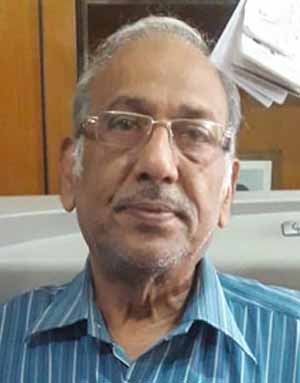
MeenakshiAron
YOUNG BROTHERS
Overall experience with tradeindia is satisfactory, Tradeindia app is a good one from where I get inquiries from various customers and is a easy-business handling app.
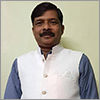
SunilDutt
CREATIVE HEALTH TECH PVT. LTD.
We are having good working experience with tradeindia, they are expertise in B2B segment in India and overseas market. They promoted our company very well and received more business inquiry. We wish tradeindia to give more business also in coming years. We wish long term business association with tradeindia.com.

VishnuChaudhary
MEDIRAY HEALTHCARE
We associated with tradeindia. This has helped us to exponentially to expand our presence not only Domestically with in India but also in different International markets. We look forward to a continual relationship with tradeindia.com and recommended to others, as one of the most organized B2B platform for branding of our products and services.

AvichalArora
INDIA MEDICO INSTRUMENTS
Now a days, I am working from home and getting good support from tradeindia, while adding new products. Thanks.
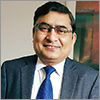
KirtiVerma
KANNU IMPEX (INDIA) PVT. LTD.
We associated with tradeindia.com and we are able to generate a customer base service of our company. There service is excellent and packages are very fruitful and good for us.
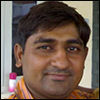
DEEPAKJOSHI
DEVPARV SURGICO
Our company has been a member of tradeindia from 2004. We are happy with the service provided by tradeindia to promote our products to our clients all over the world. It has helped us to increase our visibility.The team from tradeindia are also constantly interacting with us to help and improve our online marketing.

MohitKohli
KOWA INTERNATIONAL
We are using tradeindia service from last 3 years. They provide very good service and help me a lot to increase my business online. Its best B2B online portal.
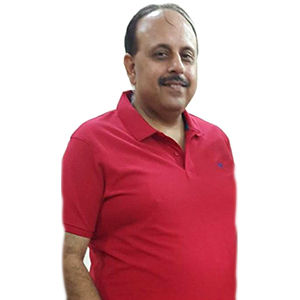
MandeepSethi
Modsurg Equipments
We are member of Tradeindia.com from last 10years and we are very much satisfied with the services of Tradeindia. It's very useful to improve my promotion as well as business. We are very thankful to team Tradeindia.
Ct Scan Machine Price List
Product Name | Expected Price |
|---|---|
| Used GE Revolution 4 slice CT Scanner | 3000000 |
| Refurbished GE Optima 660 CT Scan Machine | 28000000 |
| Ct Scan Machine | 2000000 |
| 8 Slice Refurbished Ge Ct Scan Machine | 3000000 |
| CT Scan Machine | 2600000 |
| GE Discovery RT CT Scanner | 250000 |
| Siemens Emotion 16 Slice CT Scanner | 6500000 |
| GE Optima CT660 CT Scanner Machine | 5000000 |
| GE Revolution ACT 16 Slice CT Scan Machine | 8500000 |
| Siemens Somatom Go Now CT Scan Machine | 600000 |
This Data was Last Updated on 2025-11-18
Ct Scan Machine Manufacturers | Suppliers in India
Company Name | Member Since |
|---|---|
Rege Imaging & Cine Films (p) Ltd. New Delhi, India | 15 Years |
Edge Medical Solutions Pvt. Ltd. Delhi, India | 10 Years |
Western Surgical Rajkot, India | 10 Years |
Radimage Technologies Pvt. Ltd. Faridabad, India | 8 Years |
Premier Medical Corporation Chennai, India | 6 Years |
Hi Touch Instruments Pune, India | 6 Years |
Mri Bhowanipur Kolkata, India | 3 Years |
Vvm Biotech Infra Pvt Ltd Ambernath, India | 3 Years |
Radiance Healthcare Inc Ranga Reddy district, India | 3 Years |
S.b.m. Healthcare (india) Pvt. Ltd. New Delhi, India | 3 Years |
Upcoming Tradeshows
Fire, Safety & Security Expo 2026 (PFSS)
Thu, 07 May, 2026 - Sat, 09 May, 2026
India Food Pack Expo 2026
Tue, 20 Jan, 2026 - Thu, 22 Jan, 2026
Asia Photonics Expo (APE 2026)
Wed, 04 Feb, 2026 - Fri, 06 Feb, 2026
Vyapaar Expo 2026
Fri, 30 Jan, 2026 - Sun, 01 Feb, 2026
The Harit Bharat Expo 2026
Fri, 16 Jan, 2026 - Sun, 18 Jan, 2026
Power On 2026
Fri, 23 Jan, 2026 - Sun, 25 Jan, 2026
SVUM 2026 INTERNATIONAL TRADE SHOW
Wed, 11 Feb, 2026 - Fri, 13 Feb, 2026
Printing South China 2026
Wed, 04 Mar, 2026 - Fri, 06 Mar, 2026
CIFF - China International Furniture Fair Guangzhou 2026
Wed, 18 Mar, 2026 - Sat, 21 Mar, 2026
ET TECH X 2025
Thu, 11 Dec, 2025 - Sat, 13 Dec, 2025
Popular Categories


